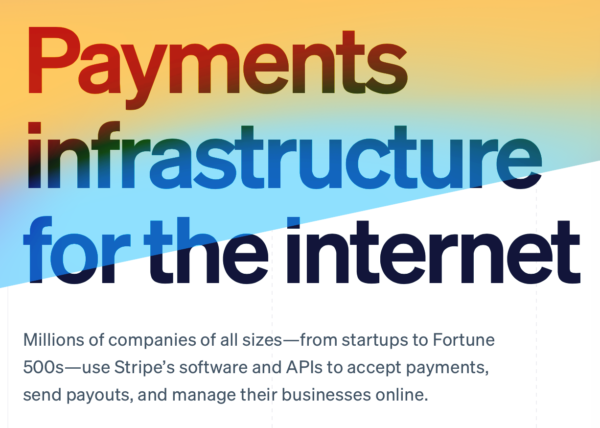The value proposition is one of the key factors of any successful marketing strategy and provides some of the best results for conversions. In fact, one study by Scandiweb found that optimized value propositions can increase customer interaction rates on a website by 35% alone. The best value proposition examples show that it can expand marketing effectiveness, boost leads, and strengthen an organization’s focus.

Fortunately, creating a well-written value proposition is not as difficult as it may seem. All it takes is a little product and organizational introspection to discover what benefits your products offer above competitors.
What is a value proposition?
At its core, a value proposition expresses why a customer should choose your products and examines your company’s benefits. Value propositions are commonly associated with marketing strategies, and while they are part of marketing, they also have a much larger influence on both a company and its consumers. Good value propositions reflect on the “why” and “how” behind a company. Why should a customer invest their time and finances into a company? And how will a company solve a problem for a consumer and enrich their lives?

Value propositions vs. unique selling propositions
Value propositions and unique selling propositions are often used interchangeably though they serve a different purpose. A unique selling proposition (or USP) is centralized on the idea that your product is distinctive. USPs are typically one-line long and act as a memorable way to differentiate yourself from others. For instance, the coffee brand Death Wish discerns itself from its competitors assertively with its USP. The company labels itself as “The world’s strongest coffee.”
On the other hand, value propositions are longer than USPs and seek to explore the benefits that a company offers its customers on a practical and emotional level. The greatest value proposition examples usually include a headline, subheadline, or short paragraph and a visual to add extra interest, such as an image, video, or illustration. After reading value propositions, customers should have no misunderstandings about what a brand stands for and what it can offer them.
Value proposition benefits
Besides the prospect of gaining more customers, value propositions offer you and your company many other benefits:
Clear organizational direction
Developing a well-written value proposition factors into your overall business plan. Before writing a value proposition, you must identify your target audience, your company values, and what makes your company special. Answering these questions will give you a foundation on which your company and its employees can refer to with all future business endeavors.
Strong customer base
Customers are looking for much more these days than just good products. In fact, 79% of consumers develop deep connections with brands that share similar values with them. Showcase your brand’s value and purpose, and customers will be more likely to become loyal followers.
Better marketing strategies overall
Lastly, crafting value propositions can aid you with finding success with other marketing efforts, including email, social media, or SEO marketing. For instance, you can use your value proposition in email marketing to attract customers and drive traffic and sales.
8 top value proposition examples
Below are some brands that have nailed value proposition writing:
1. Apple

What makes it unique: The value proposition works well because it provides emotional values for the customer. With the iOS update, customers can “connect,” “be present,” and “explore.”
2. Lyft

What makes it unique: Lyft addresses the reader directly in nearly every sentence, making it clear that the value is focused on what they can gain from the company.
3. Nike

What makes it unique: Nike makes it clear that anyone can become a Nike Member, reflecting the company’s penchant for promoting inclusivity.
4. WordPress

What makes it unique: WordPress uses social proof when it states that 60 million people use its site, an effective marketing strategy for gaining customer curiosity.
5. Grammarly

What makes it unique: Grammarly reflects its “simplified” value both in its headline and with its simple value proposition. There’s no confusion about what services Grammarly provides.
6. Visa

What makes it unique: Visa has fun with word-play here, using the word “everyone” three times. Instead of being repetitive, the value proposition emphasizes connections humorously.
7. Suntrust

What makes it unique: Writing financial value propositions doesn’t mean having to write seriously. SunTrust proves that a pun can just as effectively give value while entertaining audiences.
8. Stripe

What makes it unique: Stripe values itself as the “payments infrastructure for the internet,” reflecting the company’s confidence, backing this up by talking about which customers use it — both startups and Fortune 500s.
Tips and tricks to writing value propositions
While the value proposition examples listed above are unique in their own ways, there are still a few key tips to writing an effective value proposition for any business:
- Make value propositions easy to understand: The best value propositions are direct and not long. All who read them should easily get a feel for what a company offers.
- Provide clear benefits: Clearly show what benefits you can offer customers, specifically addressing their overall quality of life. Appeal to the customer’s emotional side for the greatest impact.
- Use facts and figures: If you have statistics that demonstrate your success, use them. Hard facts and figures will back up your claims.
- Include relevant visuals: 65% of people are visual learners, so including photos, videos, or graphics is more likely to capture a customer’s attention.
- Speak to your audience: Lastly, make sure your language speaks to the persona of the audience you are targeting. Using overly complex terms may serve to confuse audiences rather than help them.
Ready to write your value proposition?
The right value proposition will appeal to your customers and inspire your company and its mission. After all, value propositions should reflect your values, which act as a compass to guide you in all your business decision-making.
Begin your journey by making a list of what benefits you can provide customers. It takes a little reflection, but by focusing on your company’s real-world impact on customers, you can craft a value proposition that boosts your overall marketing strategy and efforts.




